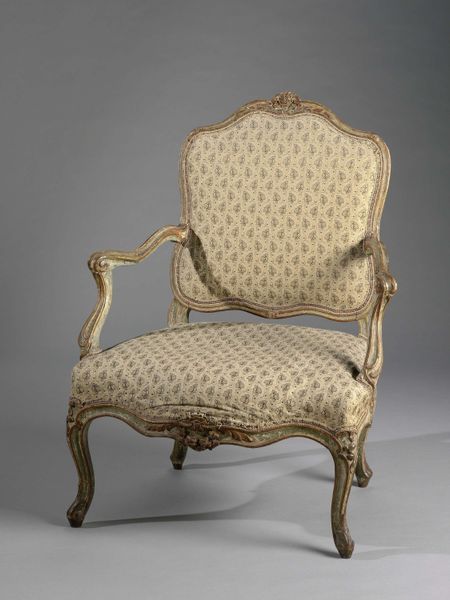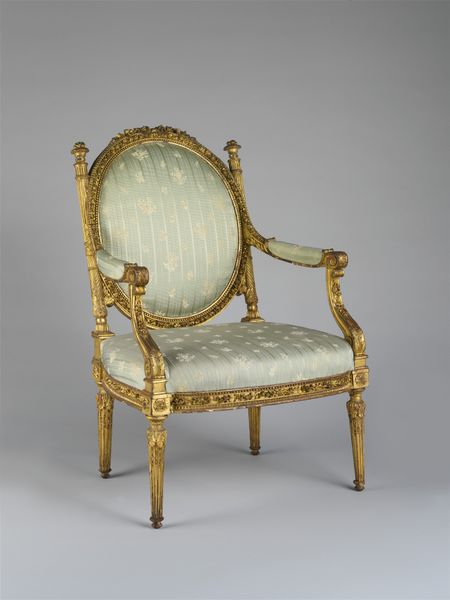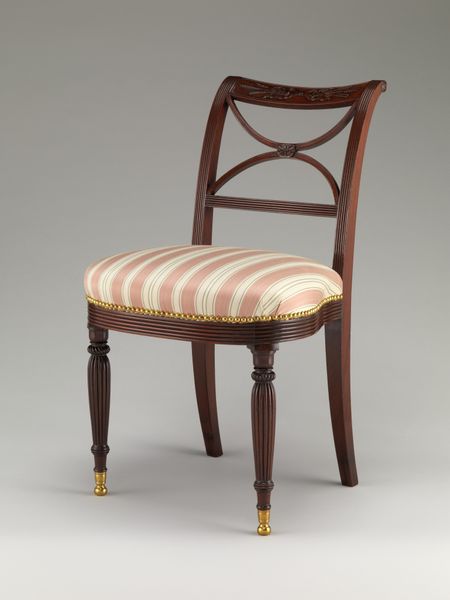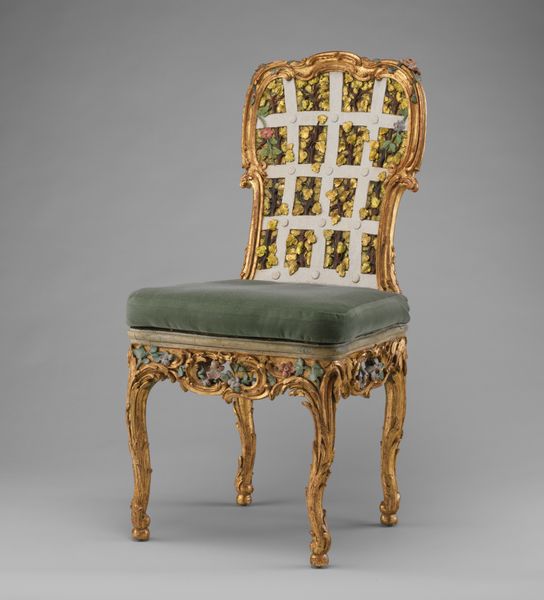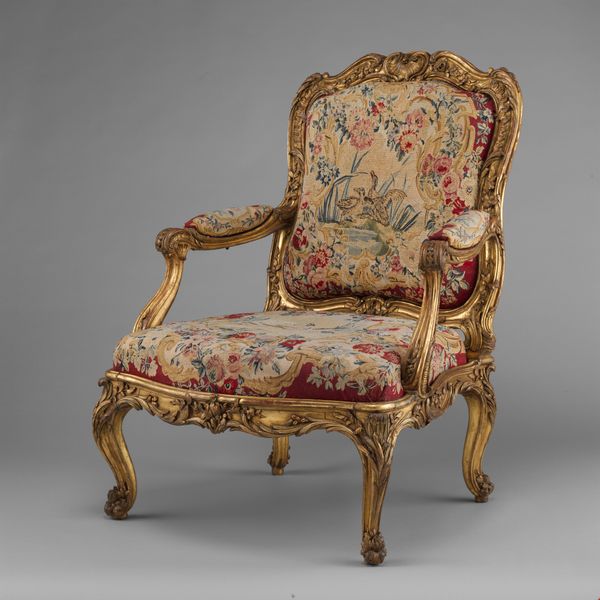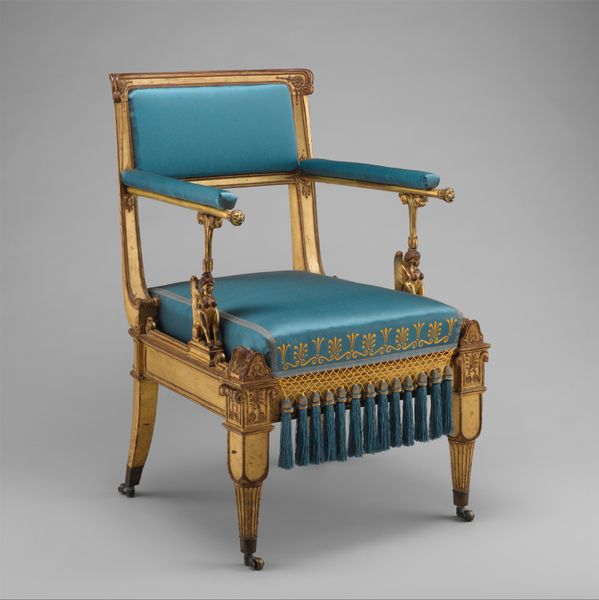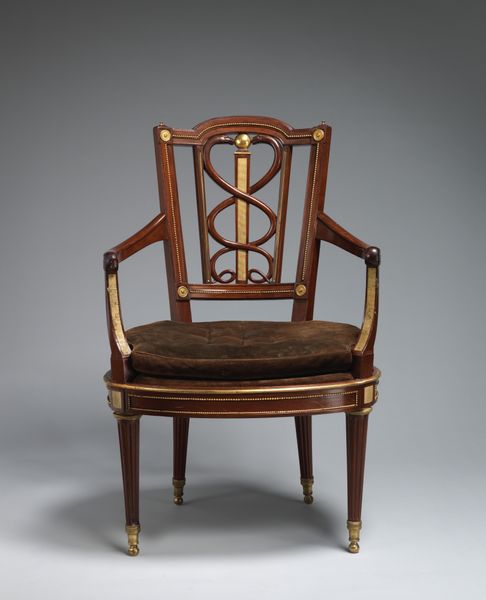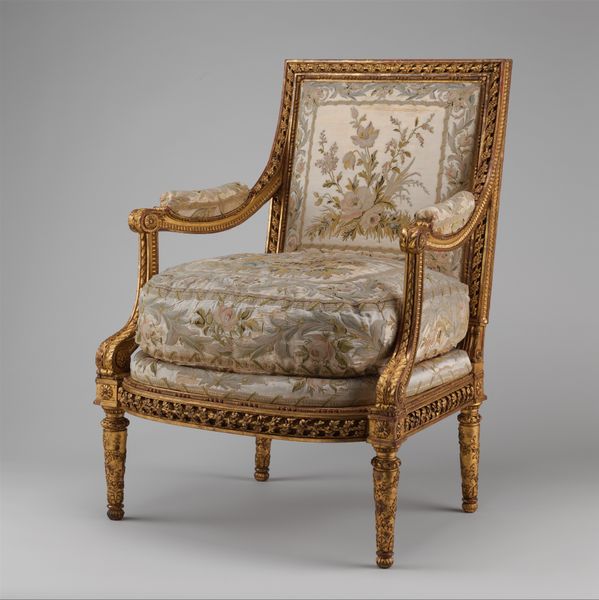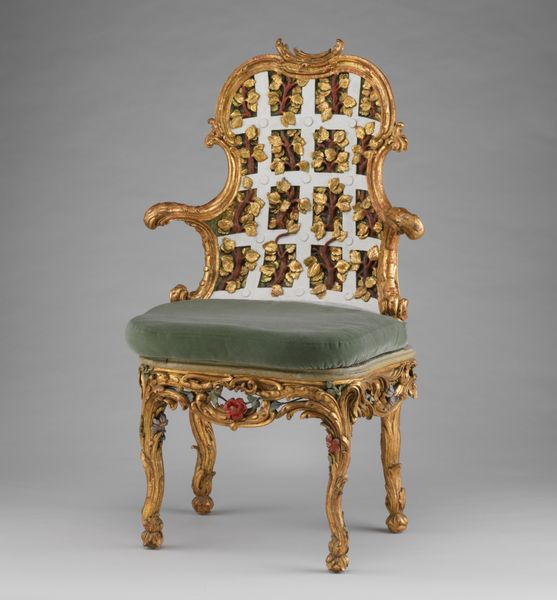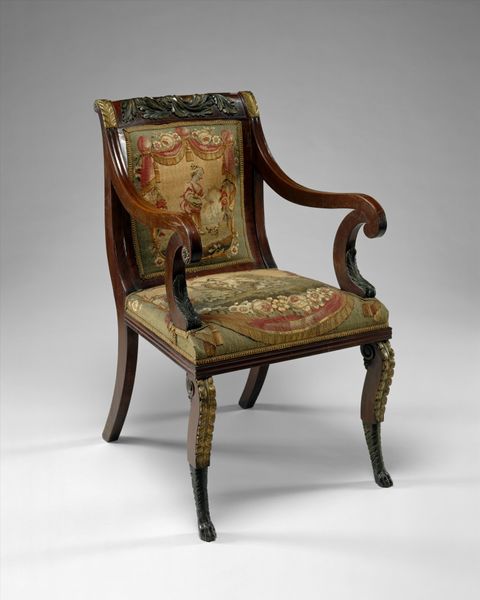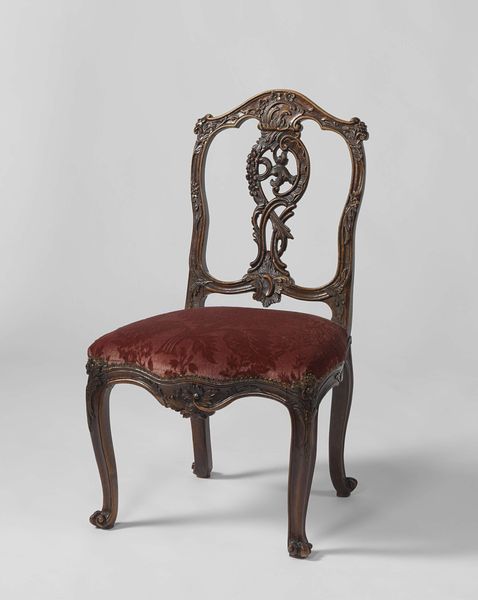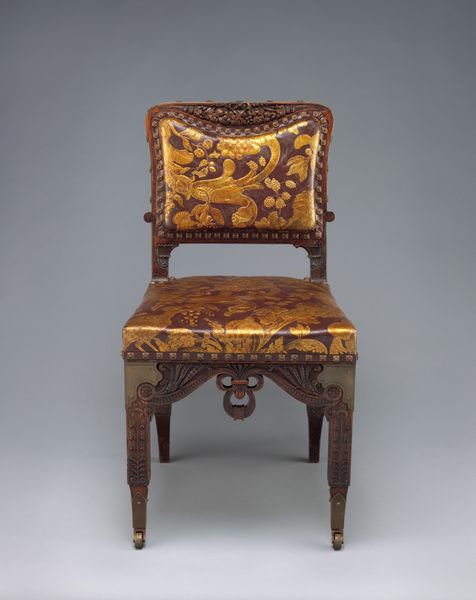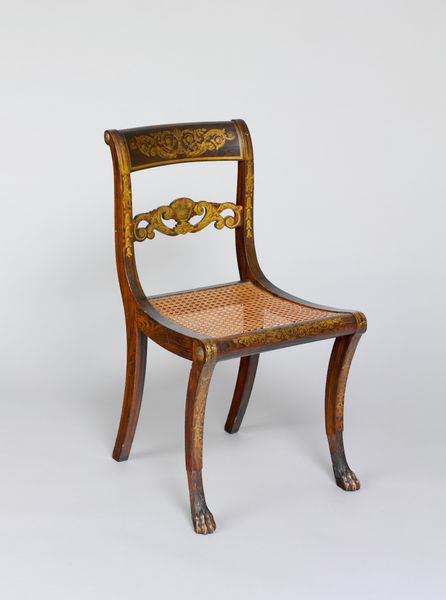
bronze, wood
#
furniture
#
bronze
#
wood
#
decorative-art
#
rococo
Dimensions: height 88.3 cm, width 62.8 cm, depth 63.0 cm, width 62.8 cm, depth 53.5 , height 41.5 cm, depth 50 cm
Copyright: Rijks Museum: Open Domain
Curator: Look at this elegant "Desk Chair," crafted circa 1760-1770. It's attributed to Etienne Meunier, fashioned from wood and bronze in the decorative Rococo style. What do you notice first? Editor: Its fragility, and also its strength, but certainly its lack of utilitarian principles. It’s gorgeous, but I’d be afraid to breathe in it! So airy, so decorative. It also feels so exclusionary in nature, who got to enjoy this beautiful piece? Curator: Rococo, especially in furniture like this, served as a potent signifier of wealth and status during the mid-18th century. It embodied the aristocratic embrace of luxury. You're right to think about its original context and the hierarchies embedded within its patronage. Editor: And, consider the labor—probably exploited labor—involved in producing something so detailed and delicate! How does something like this influence and reinforce the relationship between power and ownership, between social responsibility and the conspicuous consumption? Curator: Certainly, the piece represents an indulgence of elite taste, moving away from the weighty Baroque styles towards lighter, more playful aesthetics. Furniture like this helped to cultivate specific behaviors within elite circles. How to sit, how to behave in conversation within these very physical restraints. Editor: Absolutely. Even the asymmetry, while visually interesting, seems a conscious deviation from balanced forms. It suggests a social deviation from convention—though within strictly policed limits of social hierarchy, no doubt. Does it promote some sense of individualism, however controlled or perceived, amongst the wealthy? Curator: The chair definitely signifies privilege, it offered more than just a seat. It presented a statement. Think about the role these objects played in solidifying power dynamics, by subtly influencing conduct within those exclusive social circles. Editor: Ultimately, thinking about it now, its beauty exists tethered to this legacy, one where craft and creativity are bound by histories of extraction and the exploitation of labor for social standing. Curator: Indeed. The chair gives tangible form to complex histories. Thanks for adding context and prompting these crucial questions. Editor: Of course, its impossible not to wonder who got to relax in such extravagance, whilst others suffered in obscurity, but it is indeed a beauty nonetheless.
Comments
rijksmuseum about 2 years ago
⋮
Almost all the chairs produced in France were made of painted or gilded wood. This one, however, is different. It is a rare example of a chair veneered with tropical woods and ornamented with gilt-bronze mounts. Its style is entirely in keeping with that of the desk on view next to it.
Join the conversation
Join millions of artists and users on Artera today and experience the ultimate creative platform.
